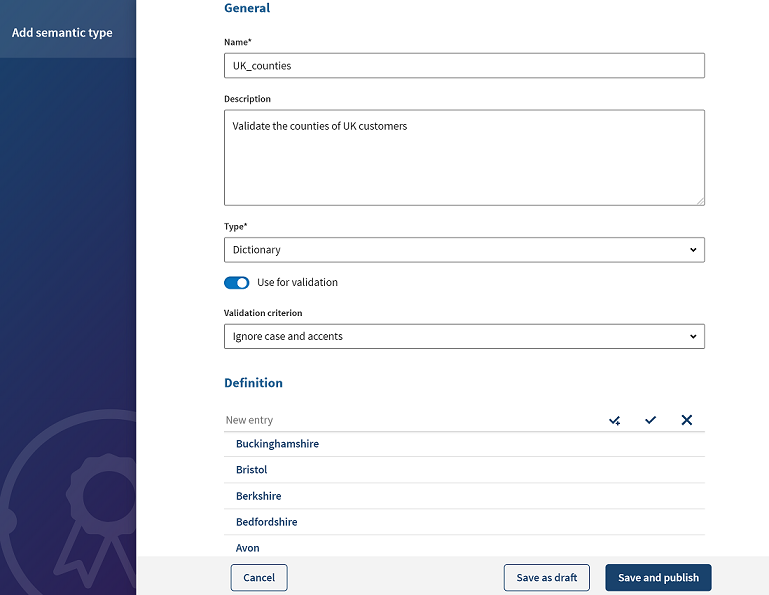Adding a new compound semantic type
You can create a compound semantic type which references other semantic types that are published on Talend Dictionary Service and add it to the list of recognized data types in the data models in Talend Data Stewardship.
You can mix all semantic types when creating a compound type, and a compound semantic type can reference other compound types on the condition that all children types are already published.
Let's say that you have a file which holds information about customers from US, UK, Germany and France. You need to intervene and validate the different zip codes against a compound semantic type you create. Once data matches one of the child types, it is considered as valid and it is not evaluated against the other referenced types.
When defining the data model in Talend Data Stewardship, you can set the semantic type for the column containing the zip codes to this new compound type, Zip_codes in this example.
Before you begin
Procedure
Results
When you load the customer data to Talend Data Stewardship, data is matched and validated against the Phone_numbers compound type you created. Data is evaluated against the first child type and if data matches it is not evaluated against the other referenced types and so on.
Did this page help you?
If you find any issues with this page or its content – a typo, a missing step, or a technical error – let us know how we can improve!

